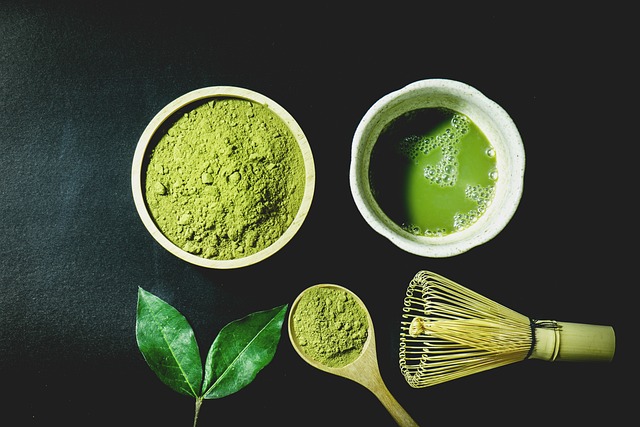Unlocking the Power: Strategies to Enhance Kratom’s Potential
In recent years, a botanical marvel from Southeast Asia has captured the attention of researchers, health enthusiasts, and individuals seeking alternative remedies for various ailments. Known as Kratom, this leafy herb has long been used by native communities for its medicinal properties. However, the true potential of Kratom is still largely unexplored and enigmatic. In this article, we delve into the strategies aimed at unraveling the mysteries shrouding Kratom, unlocking its power, and harnessing its potential as an essential component in modern medicine. Join us on this journey as we explore the latest developments, scientific research, and promising approaches used to enhance Kratom’s capabilities, and gain a deeper understanding of the possibilities lying within this remarkable botanical.
1. Exploring the Science Behind Kratom: An Overview of its Potential Benefits
Throughout history, humans have relied on plants for their medicinal properties. One such plant that has gained popularity in recent years is kratom. Derived from the leaves of the Mitragyna speciosa tree native to Southeast Asia, kratom has intrigued researchers and health enthusiasts alike due to its potential benefits.
Although kratom has been used for centuries in traditional medicine, scientific studies on its effects are still in the early stages. Nonetheless, preliminary research suggests that kratom may have several potential benefits. Some of these include pain relief, increased energy and focus, improved mood, and even potential addiction recovery aid. Additionally, kratom may possess antioxidant and anti-inflammatory properties, making it a subject of interest for further investigation.
2. Understanding the Alkaloids: Key Compounds in Kratom and their Effects on the Human Body
Alkaloids are the primary compounds found in kratom leaves, responsible for its unique effects on the human body. These naturally occurring substances have gained significant attention among researchers and enthusiasts alike. Here, we delve into the key alkaloids found in kratom and explore their various effects.
Mitragynine: This is the most prominent alkaloid in kratom and is responsible for its stimulating and energizing effects. It interacts with the same receptors in the brain as opioids but does not produce the same level of respiratory depression. Mitragynine also offers pain relief and can uplift mood, making it a popular choice among individuals seeking a natural energy boost.
7-Hydroxymitragynine: Considered to be one of the most potent alkaloids in kratom, 7-hydroxymitragynine is a partial opioid receptor agonist. This compound is responsible for the sedating and analgesic effects of certain kratom strains. It acts on the mu-opioid receptors to provide pain relief and induce a sense of deep relaxation. However, due to its potency, it should be used with caution and in moderation.
3. Unleashing Kratom’s Natural Healing Properties: Effective Strategies for Enhancing its Potential
Kratom, an ancient herbal remedy, has gained significant popularity in recent years for its natural healing properties. Whether you are just starting your journey with kratom or have been using it for a while, there are effective strategies that can help you enhance its potential and experience its full benefits. Here are some tips and techniques to unleash the power of kratom:
- Choose the right strain: Kratom comes in various strains, each offering unique effects. Whether you are seeking relief from pain, increased energy, or relaxation, it is essential to choose the strain that aligns with your desired outcome. Red strains are known for their sedating properties, while green strains are more energizing. White strains, on the other hand, strike a balance between the two. Take the time to experiment and find the strain that suits your individual needs.
- Optimize dosage: Finding the optimal dosage of kratom is crucial for maximizing its healing potential. Start with a low dosage and gradually increase until you achieve the desired effects. It is recommended to use a kratom dosage guide to ensure you are taking the right amount for your body. It is worth noting that kratom’s effects can vary depending on factors such as body weight, tolerance, and metabolism. Taking the right dose will enable you to harness its natural healing properties effectively.
- Enhance absorption: To fully benefit from kratom, it is important to ensure optimal absorption. Some users prefer consuming kratom on an empty stomach to enhance its effectiveness. Others combine it with a small amount of fatty food, which can aid in absorption. Additionally, consuming kratom in the form of tea can also improve absorption, as hot water helps extract the active compounds. Experiment with different methods to find what works best for you.
4. Unlocking the Mysteries: Uncovering the Mechanisms Behind Kratom’s Analgesic and Stimulant Effects
Kratom, a tropical tree native to Southeast Asia, has gained increasing popularity in recent years due to its potential analgesic and stimulant effects. However, the mechanisms behind these effects have remained shrouded in mystery, leaving scientists and researchers curious to uncover the science behind this natural remedy.
Several studies have proposed potential mechanisms behind kratom’s analgesic properties. One theory suggests that the alkaloids present in kratom leaves, such as mitragynine and 7-hydroxymitragynine, interact with opioid receptors in the brain, resulting in pain relief. Additionally, the stimulation of mu and delta opioid receptors may lead to the activation of the descending pain inhibitory pathway, ultimately reducing pain sensation.
- Another proposed mechanism is the modulation of serotonin levels. Serotonin is a neurotransmitter responsible for regulating mood and pain perception. Kratom may enhance serotonin release or inhibit its reuptake, leading to increased feelings of well-being and pain relief.
- Additionally, kratom’s stimulating effects may be attributed to its impact on adenosine receptors. Adenosine is a neurotransmitter involved in regulating sleep-wake cycles and arousal. By blocking adenosine receptors, kratom may increase alertness and energy levels.
While these theories offer potential explanations, it is important to note that more research and clinical trials are necessary to fully understand the mechanisms of kratom’s effects. Understanding these mechanisms will be instrumental in harnessing kratom’s therapeutic potential and developing safe and effective treatments for pain management and energy enhancement.
5. Optimizing Dosage and Consumption Methods: Practical Tips for Maximizing Kratom’s Potential
When it comes to maximizing the potential benefits of kratom, finding the right dosage and consumption method is crucial. Here are some practical tips to optimize your kratom experience:
1. Start with a low dosage: It’s always wise to begin with a small amount of kratom, especially if you’re a beginner. This allows you to gauge its effects on your body and adjust accordingly. A typical initial dosage is 2-3 grams, which can be increased gradually over time.
2. Experiment with different strains: Kratom comes in various strains such as Bali, Maeng Da, and Malay, each offering unique properties. Trying different strains can help you identify the one that suits your needs best. Keep in mind that each strain may require different dosages for optimal effects.
3. Understand your tolerance: Regular kratom users may develop a tolerance over time, which can diminish its effects. To combat this, consider alternating strains or taking short breaks from kratom to reset your tolerance levels.
4. Find your ideal consumption method: Kratom can be consumed in different ways, including traditional toss-and-wash, making tea, or encapsulating the powder. Experiment with different methods to discover the one that feels most comfortable and effective for you.
5. Stay hydrated: Kratom has a tendency to dehydrate the body. Remember to drink plenty of water throughout the day, especially when using kratom, to maintain proper hydration and prevent any potential side effects.
By following these practical tips for optimizing dosage and consumption methods, you can enhance your kratom experience and make the most of its potential benefits.
6. The Role of Kratom in Alternative Medicine: Exploring its Potential as a Substitute for Opioids
Kratom, a Southeast Asian plant native to countries such as Thailand and Malaysia, has been gaining significant attention in the world of alternative medicine. Its potential as a substitute for opioids has spurred interest among researchers and healthcare professionals alike. The active compounds found in kratom leaves have been shown to interact with opioid receptors in the brain, leading to pain relief and a sense of euphoria.
While kratom is not yet approved by the Food and Drug Administration (FDA) for medical use, its proponents argue that it could serve as a viable alternative to traditional opioids, which are known for their potential for addiction and overdose. Several studies have explored the potential of kratom in managing chronic pain, reducing opioid withdrawal symptoms, and even combating depression and anxiety. However, it is important to note that research on kratom is still limited, and more well-designed clinical trials are necessary to fully understand its benefits, risks, and proper dosage.
- Possible Benefits of Kratom:
- Pain relief
- Reduced opioid withdrawal symptoms
- Elevated mood and increased energy
- Improved focus and mental clarity
- Potential treatment for anxiety and depression
- Important Considerations:
- Controversial legal status in certain countries and states
- Lack of regulation and quality control of kratom products
- Possible side effects, including nausea, constipation, and addiction
- Interactions with other medications and substances
- Proper dosage and responsible use are crucial
As the debate surrounding kratom continues, it is crucial for policymakers, healthcare professionals, and individuals interested in exploring alternative treatment options to stay informed about the potential benefits and risks associated with this plant. Further research and regulation are necessary to determine the role of kratom in alternative medicine and whether it could serve as a safer substitute for opioids in the future.
7. Navigating Legal and Safety Concerns: Strategies to Ensure Responsible Use and Unlock Kratom’s Potential
Navigating legal and safety concerns surrounding kratom is crucial in order to fully unlock its potential as a beneficial substance. By implementing strategic measures, responsible and safe use can be ensured, promoting the well-being of those who choose to incorporate kratom into their lifestyle.
To address the legal aspect, it is essential to advocate for comprehensive and evidence-based regulations. This can be achieved through:
- Educating policymakers: Providing accurate information and scientific research to lawmakers so they can make informed decisions.
- Working with advocacy groups: Collaborating with organizations that support responsible kratom use and lobbying for fair regulations.
- Engaging in public outreach: Raising awareness about the potential benefits of kratom through community events and educational campaigns.
Furthermore, ensuring the safety of kratom users requires robust quality control measures. Some strategies to achieve this include:
- Implementing strict manufacturing standards: Encouraging producers to adhere to Good Manufacturing Practices (GMP) to ensure purity, consistency, and accurate labeling of kratom products.
- Supporting independent testing: Promoting third-party laboratory testing of kratom products to verify their potency, authenticity, and absence of contaminants.
- Providing clear guidelines for consumer use: Sharing information on appropriate dosage, potential interactions with other substances, and potential side effects to empower users to make informed decisions.
FAQ
Q: What is Kratom and why is it gaining popularity?
A: Kratom is a tropical tree indigenous to Southeast Asia, known by its scientific name Mitragyna speciosa. Kratom leaves contain alkaloids that interact with the brain’s receptors, producing stimulating or sedating effects. In recent years, Kratom has gained popularity due to its potential as a natural remedy for pain relief, anxiety management, opioid withdrawal assistance, and energy boost.
Q: What are some potential strategies to enhance Kratom’s effectiveness?
A: Several strategies can be employed to enhance Kratom’s potential. The first is to select high-quality Kratom strains with optimal alkaloid composition. Experienced users often experiment with different strains to find the one that best suits their needs. Another strategy involves proper dosing, as consuming the right amount is crucial for achieving desired effects. Additionally, consuming Kratom on an empty stomach, with citrus juice or turmeric, can potentiate its effects. Lastly, kratom tolerance can be managed by rotating strains and taking regular tolerance breaks.
Q: How can Kratom be used to alleviate pain, anxiety, and opioid withdrawal symptoms?
A: Kratom interacts with the body’s opioid receptors and provides pain relief, making it a natural alternative to traditional painkillers. For anxiety management, Kratom’s stimulating effects can promote relaxation and reduce stress. Kratom’s alkaloids can also alleviate withdrawal symptoms associated with opioid addiction, providing a safer and more natural option for those seeking assistance in overcoming addiction.
Q: What are the potential risks and side effects of Kratom consumption?
A: While Kratom has shown promising benefits, it is crucial to understand the potential risks and side effects. These may include nausea, constipation, dry mouth, loss of appetite, and increased urination. Consuming Kratom in excessive amounts or combining it with other substances can lead to more severe side effects, such as dizziness, confusion, or respiratory depression. Additionally, regular and prolonged Kratom use may result in dependency or addiction.
Q: Is Kratom legal and regulated?
A: The legal status of Kratom varies from country to country. In several Southeast Asian nations where Kratom is native, it may be fully or partially regulated. In the United States, the legal status of Kratom is determined by state laws. While several states have banned or regulated its sale and consumption, others still permit it. It is essential to research and understand local regulations before purchasing or using Kratom.
Q: Are there ongoing scientific studies to validate Kratom’s potential benefits?
A: Yes, ongoing scientific research aims to further understand Kratom’s potential benefits and risks. While Kratom has a long history of traditional use, more controlled studies are needed to establish its safety and efficacy. Researchers are investigating Kratom’s alkaloid composition, mode of action, and potential medical applications. Results from these studies will contribute to a more comprehensive understanding of Kratom’s potential.
Q: What precautions should one take before using Kratom?
A: It is crucial to approach Kratom with caution and responsibility. Before using, individuals should inform themselves about the legal status and regulations in their area. Consulting with a healthcare professional who has knowledge of Kratom is also advised, especially for individuals with pre-existing medical conditions or those taking other medications. Educating oneself about proper dosing and potential side effects is essential in ensuring a safe and effective Kratom experience.
Conclusion
In conclusion, unlocking the power of kratom is a topic that holds great promise in the world of alternative medicine. As we have explored the various strategies to enhance its potential, it becomes evident that further research and regulation are essential to fully tap into its benefits. The herb’s unique alkaloid composition and intricate interactions with the human body open doors to a plethora of therapeutic applications, including pain management, anxiety relief, and even potential opioid addiction treatment. However, it is crucial to approach kratom use with caution, understanding its potential risks and limitations. As policymakers and researchers continue to navigate this complex botanical, it is our responsibility to ensure safe access for those who seek its potential benefits while sustaining a vigilant eye on potential adverse effects. Unlocking the power of kratom requires a balance between scientific investigation, regulatory frameworks, and informed personal decisions, all of which should be guided by a deep reverence for the safety and efficacy of alternative treatments. Only through collaboration, knowledge sharing, and responsible use can we truly harness the potential of this ancient botanical and offer effective means of wellness to those in need.












